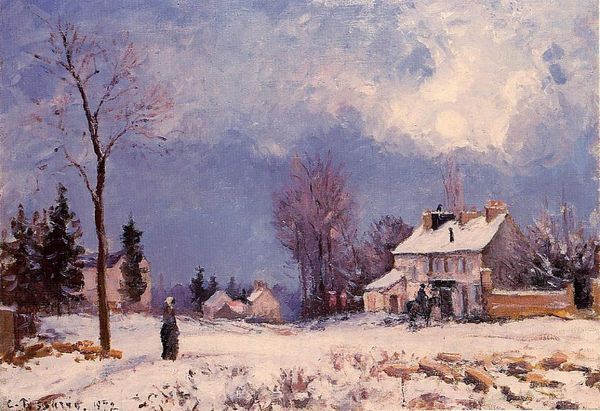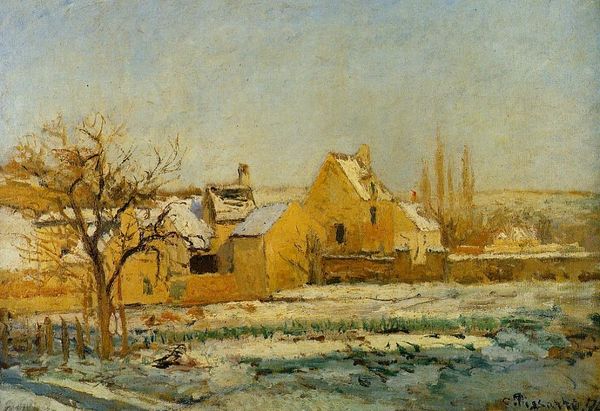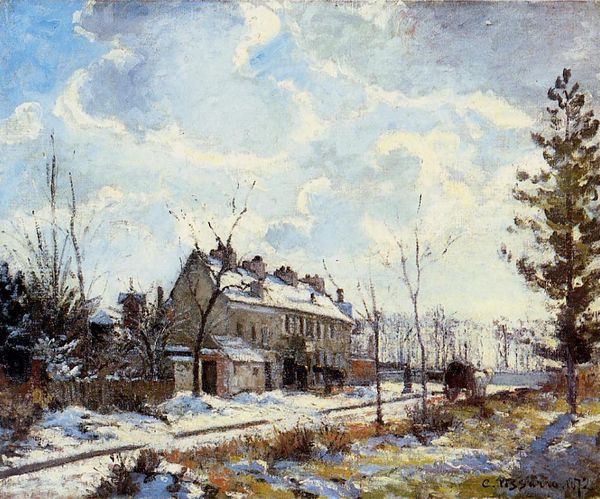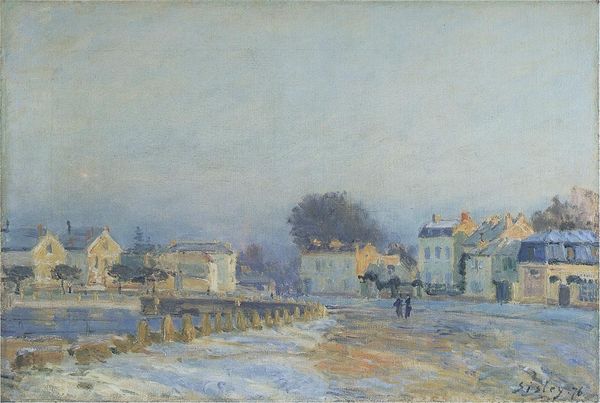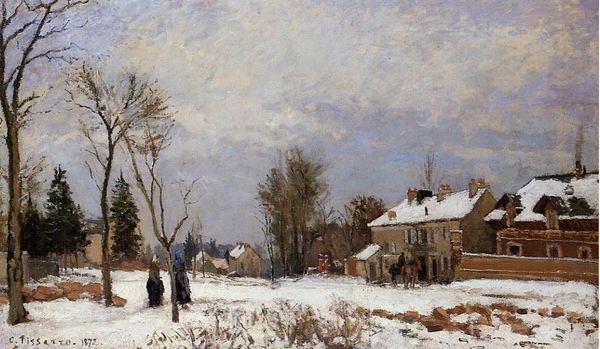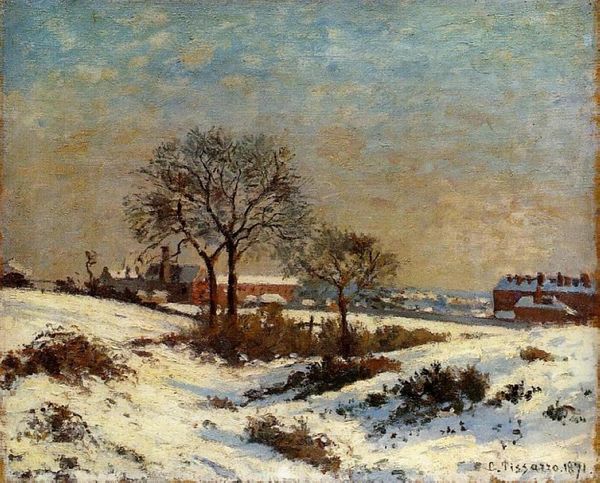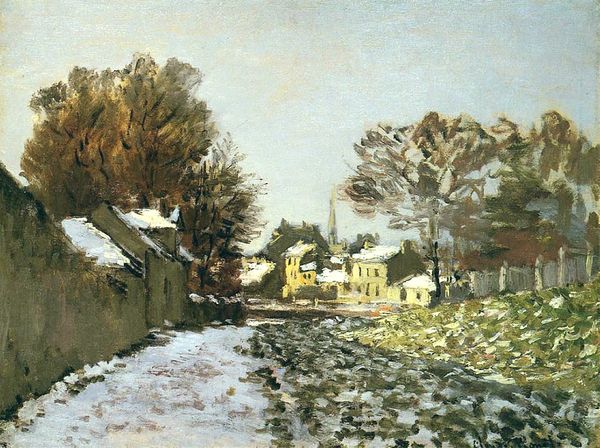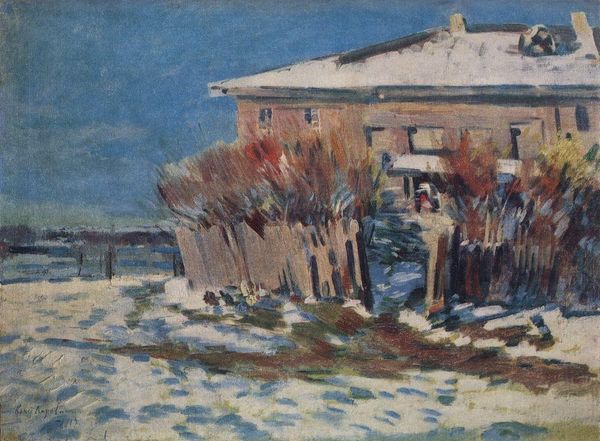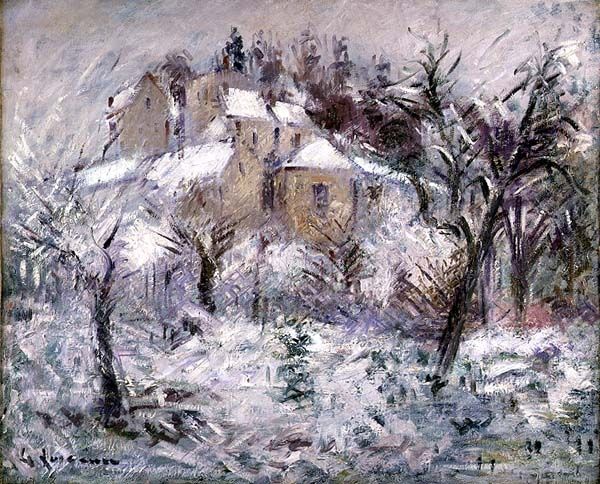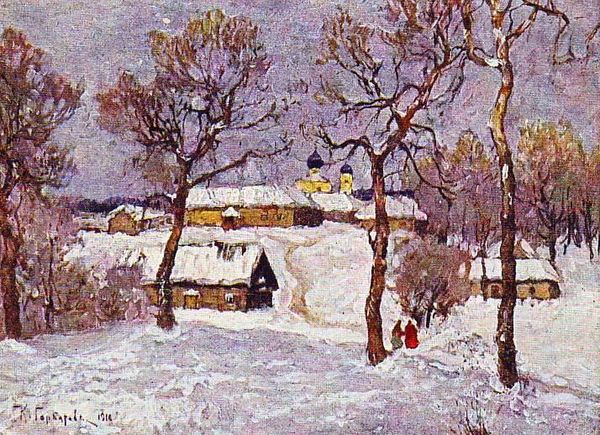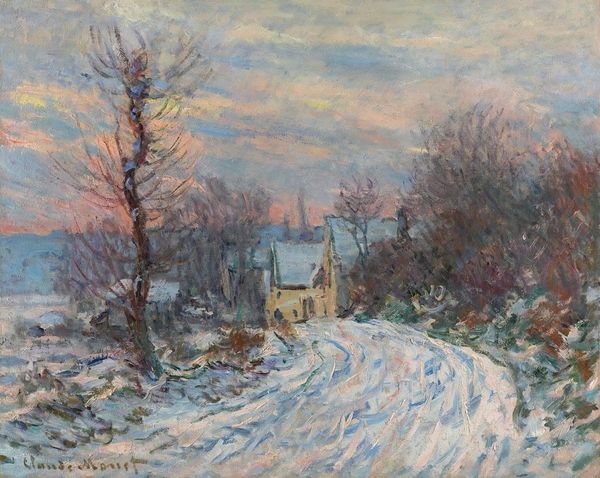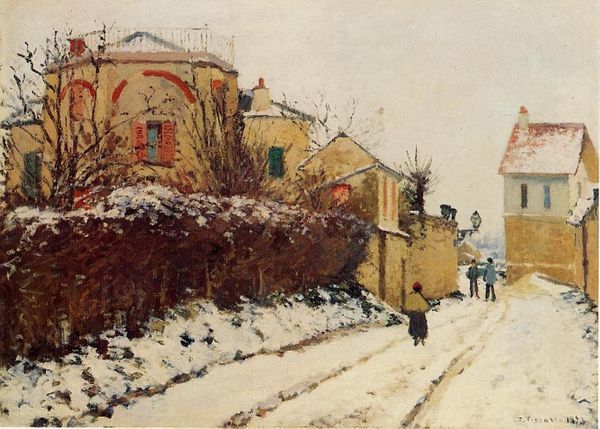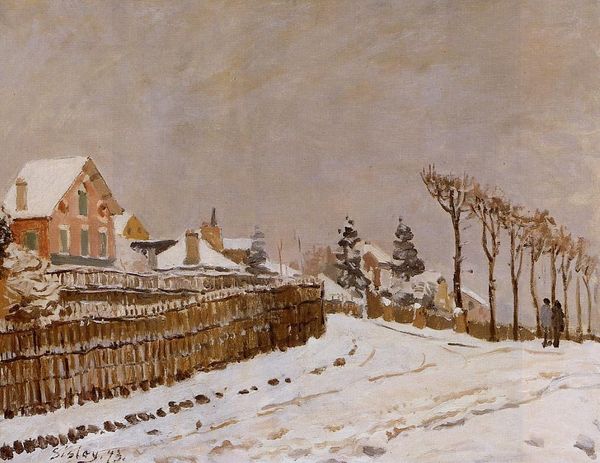
painting, plein-air, oil-paint
#
painting
#
impressionism
#
plein-air
#
oil-paint
#
landscape
#
impressionist landscape
#
oil painting
Copyright: Public domain
Curator: Ah, "Neige," or "Snow," painted by Armand Guillaumin in 1876. It’s a snowy landscape rendered in oil on canvas, that whispers of cold afternoons. What's your first encounter with it? Editor: My encounter? Bleak, initially. A hushed, almost desolate quiet permeates the scene. But also, oddly comforting. There's a geometry beneath it, in the layout of structures and ground planes. Curator: You see, that desolation? I reckon that’s the realness, isn't it? Winter ain’t always fairy lights and hot cocoa, it's also the quiet bareness that makes you look inwards. Editor: Precisely! Look at the interplay of cool and warm tones, that muted palette – it creates a tangible atmosphere, doesn't it? Guillaumin avoids stark contrasts, preferring subtle gradations in the snow and sky. It speaks to semiotic complexity. Curator: I feel Guillaumin was one of those chaps who found more in the mundane than the magnificent. Plain-air painter, always looking at nature. Just imagine him right there with the canvas, and the cold air… Editor: You know, plein-air informs this painting on such a material and temporal level; we can see this even now, over 100 years on. The short, broken brushstrokes are fascinating; almost an anticipation of neo-impressionism. The formal qualities push it forward. Curator: You are absolutely right, yes. It's not photorealism. He has the eye of the artist, to paint how light feels. It’s why they called them impressionists, right? Capturing impressions not pure recreations. I get the feeling Guillaumin wasn't just copying the snow; he was whispering its secrets onto the canvas. Editor: A fine example of impressionistic articulation. And it begs a crucial question about art. To what extent can we, or even should we, analyze our experiences using semiotic theory to expose and interrogate our personal responses to form? Curator: Theory’s good, but never lose your wonder, right? See how this little tableau has all of this… this quiet power, speaking to me still after all those winters gone by. Editor: Agreed. I see now how the formal analysis of “Neige,” when coupled with such reflection, yields a far richer and nuanced response.
Comments
No comments
Be the first to comment and join the conversation on the ultimate creative platform.
